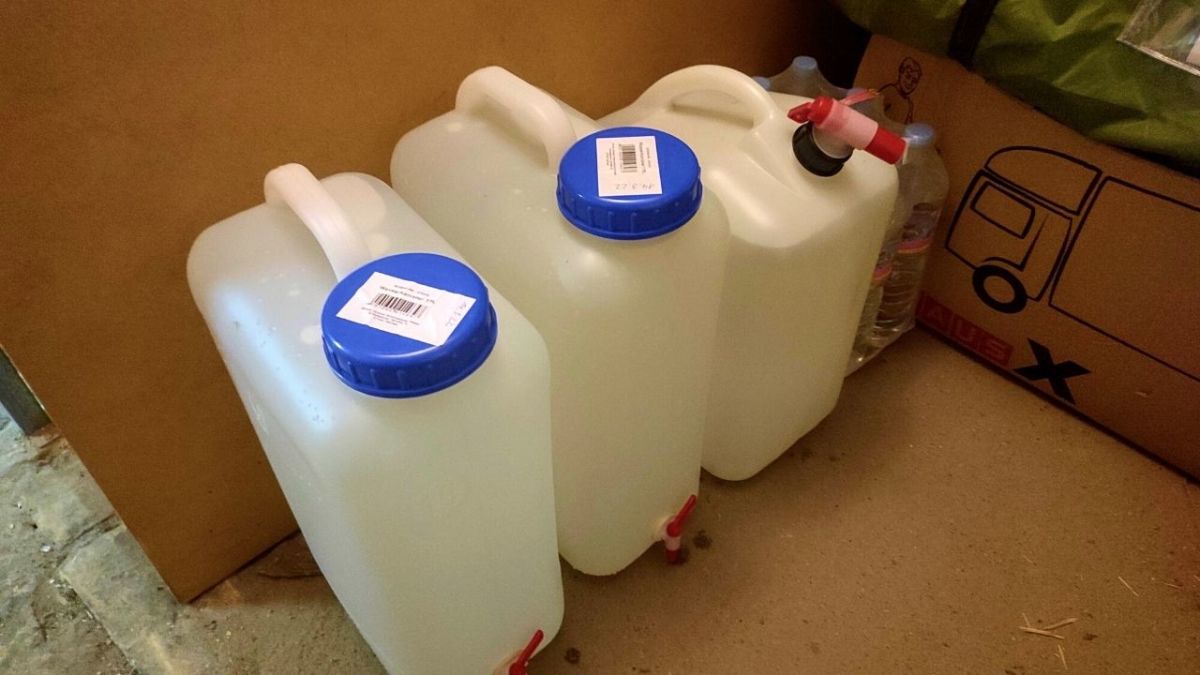
How long can water be stored before it goes bad?
👉 The key facts from this guide
- Storage: Water can be stored for a long time, depending on the type of storage and the purity of the water.
- Contamination: Water does not go bad, but can be contaminated by bacteria, algae, and other pathogens.
- Containers: Water should be stored in food-safe containers that are kept in a dark, cool environment.
- Disinfection: Chemical treatments like household bleach or iodine can be used to keep the water drinkable.
- Cleaning: It is important to regularly clean and disinfect water containers to prevent contamination.
Water is one of the basic requirements of life.
And there is no alternative or substitute for water either.
We often take water for granted.
But you will surely realize how important it is when you have to go through your daily life without fresh drinking water.
Being thirsty is not a great experience, especially extreme thirst is horrible.
The other day, when I looked at my water storage containers, I asked myself, "How long can I store my water before it goes bad?"
And that's exactly what this guide is about.
How long can I store water?
The safe storage duration of drinking water ranges from one day to unlimited periods, depending on how you store the water and how high the purity of the water is.
Clean water left out in an open cup outside will likely go bad within 1–3 days.
Water from your tap (provided it is clean enough to drink) stored in a sealed container can last up to 6 months, or perhaps longer.
It is, however, a good idea to check it and add a small amount of household bleach (more about that below) to clean the water (do not use bleach with refreshing or fragrant scents). Purified water sealed in a food-grade container can last 2 years or even much longer.
The estimated period before clean water goes bad (gets contaminated)
| Type of water storage | Time duration before contamination |
| Open cup | 1–3 days |
| Self-sealed containers, barrels, or jugs with clean tap water | 6–12 months + (regularly check and replace) |
| Purified water, sealed in a food-safe container | 2 years + (when stored properly) |
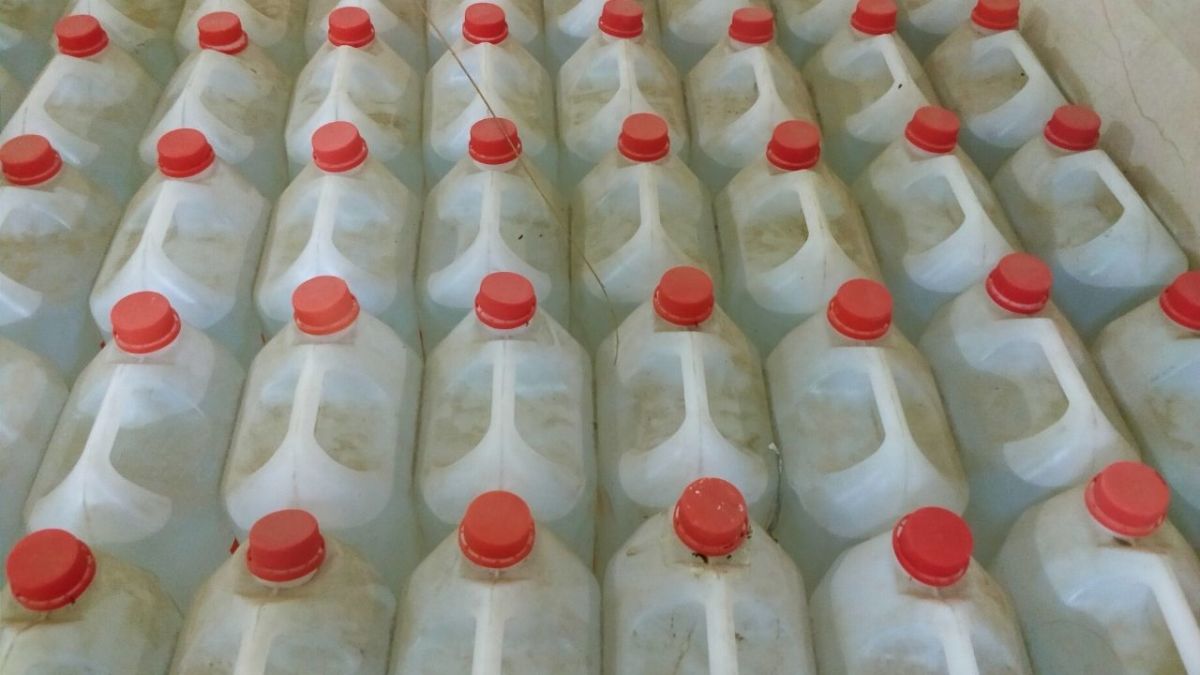
How long can you store water in a 200-liter container?
Drinking water stored in a 200-liter food-grade container can be safely stored for up to a year, or even longer under the right circumstances. To safely store water in a 200-liter container for 1 year or longer, a clean food-grade container must be used. It should also be tightly sealed to keep light and chemicals out and stored in a dark, cool place.
Furthermore, with regular treatment (approximately every 6 months) with the right amount of household chlorine bleach or water purifier, it can be stored for much longer. However, if possible, I replace my stored water once a year.
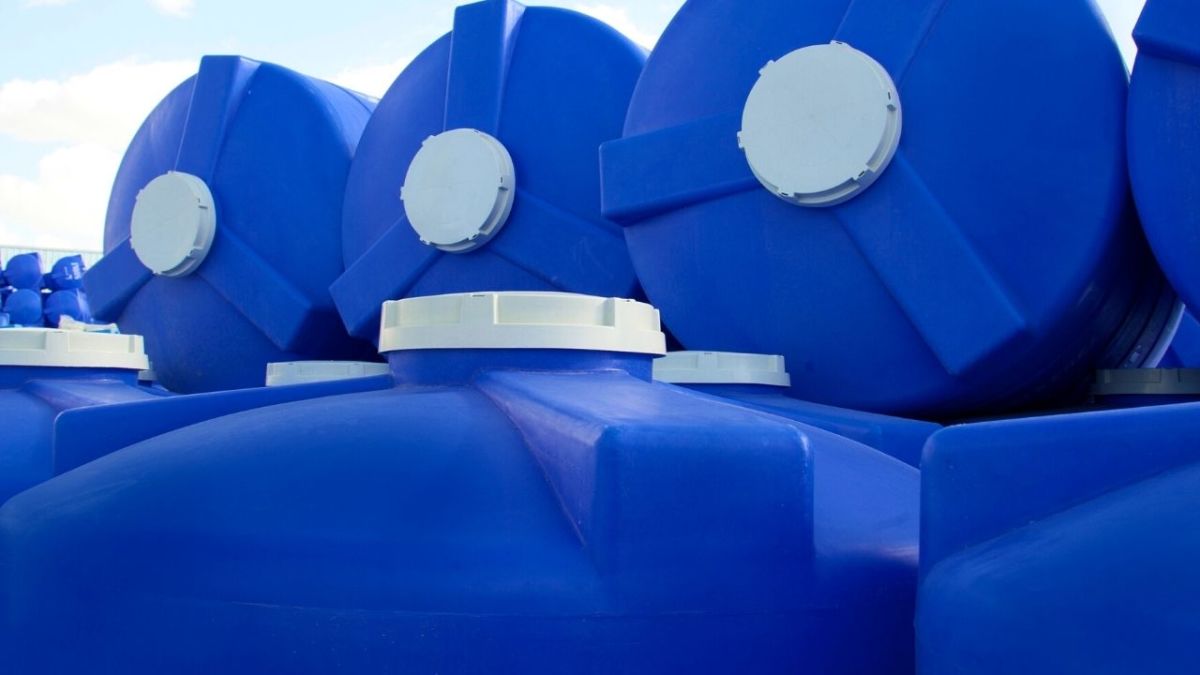
Does stored water go bad?
If water is stored correctly, it does not spoil. However, if pollution occurs in the water, it can become bad. Theoretically, your water can remain drinkable forever if you take the right precautions by sealing and storing your water so that no bacteria or other contaminants can enter and spoil it.
Let's clarify something: water itself does not really go bad. The truth is that it can become contaminated over time. Bacteria, algae, and other pathogens are often what contaminates your water storage and causes it to become bad. This contamination can occur in many ways, with varying degrees of severity.
Can water be stored indefinitely?
Drinking water can be stored indefinitely if it is properly stored in food-grade containers and kept in a dark, cool environment.
Chemical treatments (including household bleach or iodine) can be used every 6 months to a year to keep the water drinkable. However, it is recommended to empty the container, clean the container, and replace with new drinking water every two years or earlier.
Containers, including food-grade plastic containers, release chemicals into the water of storage but do not cause serious health problems. However, if left in a hot environment such as a garage or car during summer, the water will taste bad and will be subjected to a higher risk of contamination.
How to store water to prevent it from going bad
The Federal Emergency Management Agency (FEMA) recommends storing drinking water in clean plastic, glass, enameled metal, or fiberglass containers. After filling the container, it should be tightly closed and stored in a dark, cool place.
On the BBK website, I also searched for information, but unfortunately found none.
To prevent water from going bad, do the following:
- Start with clean drinking water
- Store the water in clean, food-grade plastic, glass, enameled metal, or fiberglass containers
- Close the containers tightly to keep out light and chemicals (covering the water storage with a tarp may be a good idea)
- Store the water in a dark, cool place
How can you tell if your water has gone bad (been contaminated)?
Your water supply may be contaminated if it:
- Has a strange odor
- Is cloudy
- Has a strange color
- Has algae present
- Contains other debris or dirt
Here, rely on your common sense.
Inspect your water cans about every 6 months to determine if the water needs to be treated or replaced.
If you suspect it is contaminated, it is best to pour out the old water, clean the container, and fill it with clean water.
Use a Water Filter
Contaminated water can be purified and made drinkable again. I always have a few new water purification tablets on hand for emergencies.
If I am not sure about the purity of my water container, I will definitely use a water purifier or a water purification method before drinking.
I always have a water filter (here's my list of the best ones) ready for any situation, in my bug out bag and at home.
When I drink from my water storage, I use a water filter - especially if I'm uncertain if the water is contaminated. Ideally, you should keep several of the following water filters in different places so that I can easily access them when needed.
By far, my favorite mini water filter is the Sawyer Mini (check the price here on Amazon). It's better than the LifeStraw because it filters up to 100,000 gallons (378,541 liters) of water, while the LifeStraw only filters up to 1,000 liters of water.
I also own a Survivor Filter Pro, which is a hand pump water filter (check the price here on Amazon). I like this hand pump filter best for water storage because I can simply drop the intake hose into my water container and pump out clean water.
Can you get sick from drinking old water?
You can get sick from drinking old water, but the reason for the illness is not because the water is old, but because bacteria, algae, and other pathogens are present in the water source. So if you get sick from drinking old water, it depends more on how the water was stored and how clean it was than how old it is.
For comparison: it is much more likely that you will get sick if you drink old water that has been sitting in an open cup or bottle outside for a few days. If you drink sealed, purified water from an unopened bottle that is a few years old, you are unlikely to get sick.
3 Mistakes that make your water go bad in your water containers
- Bacteria or algae were already in the water before it was bottled
- Contaminants are released from the container into the water
- Improper handling of the water containers
Bacteria or Algae
If the water in your water containers is green or contains sediment, your water container is likely contaminated.
If you let a bucket of water sit outside for a few days, you will notice that the water in the bucket contains mosquito larvae, algae, and various other life forms that you do not want to drink.
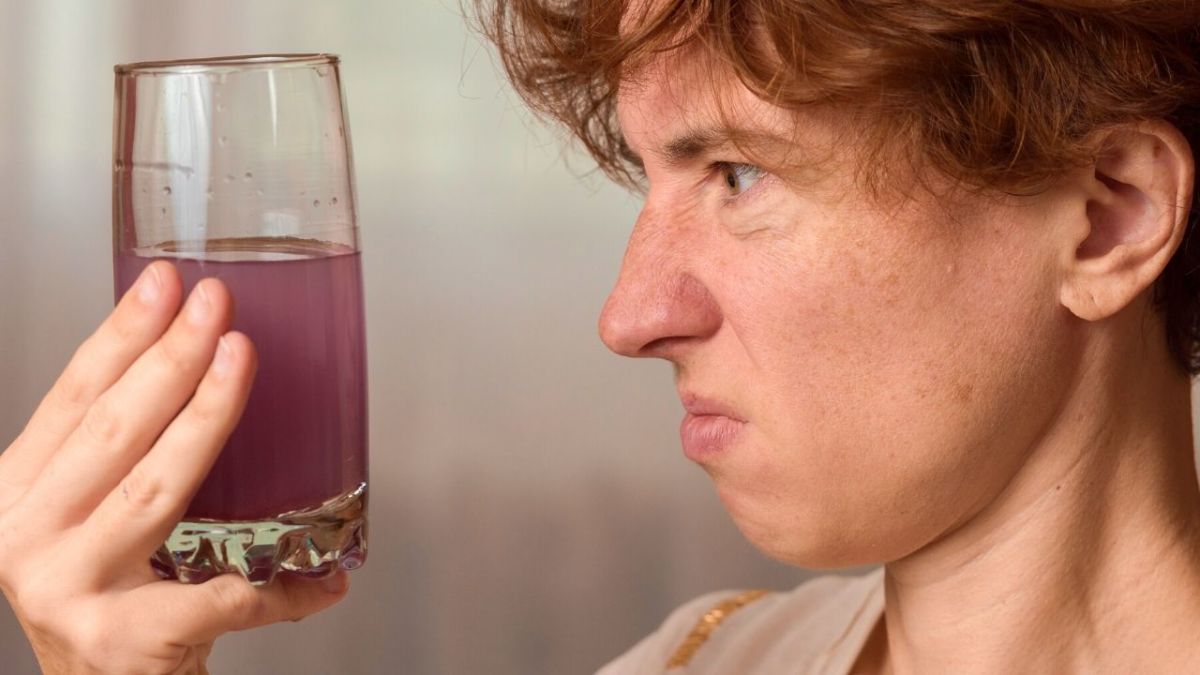
Previous contamination from the container is transferred into the water
The second possibility that makes your water container unusable is that something from the container has entered the water.
If you were to store your water in a lead container, the lead would seep into the water and poison it.
It is important not to store water in containers that are not food-grade.
According to the Centers for Disease Control and Prevention (CDC), clean drinking water should preferably be stored in plastic, ceramic, or metal containers.
Improper Access to Water Storage
Now let's take a look at the third way your water storage can become contaminated and go bad. This way, bacteria can get into the water through your hands or other objects that may carry bacteria.
The CDC suggests that your containers have the following features:
- A small opening with a lid or cover that prevents other people from possibly contaminating the stored water with objects such as hands, cups, or ladles.
- A faucet or small opening to allow for easy and safe access to the water without having to insert hands or objects into the container.
Teach your family members how to access the water canisters properly. Please be careful when accessing the stored water – otherwise it can go bad within a few days.
NEVER USE containers that have previously been used to store liquid or solid toxic chemicals (bleach, pesticides, etc.).
Disinfection of Water Canisters with Chemicals
It is important to remember to regularly clean your filled water canisters. One promising way to disinfect your water canisters is to use bleach.
But there are other chemical agents such as iodine, hydrogen peroxide, sodium chlorite, and potassium permanganate.
Bleach is often the chemical of choice as it is widely available and easy to find.
Common household bleach contains approximately 5.25-8.25% chlorine (details can be found on the label).
How much bleach should you add to drinking water to disinfect it?
Although it may sound strange, bleach can disinfect your water. Household bleach kills most microorganisms.
Please consider using only household bleach without thickeners, fragrances, or additives. The use of bleach does not prevent toxic contamination (from chemicals).
- Add 2 drops (⅛ teaspoon) of liquid household bleach per 1 liter of clear water
- Add 4 drops (¼ teaspoon) of liquid household bleach per 1 liter of cloudy water
The following table shows how much bleach is needed to clean/disinfect 1,000 liters, 500 liters, 250 liters, 100 liters, 50 liters, 25 liters, 20 liters, 10 liters and 1 liter.
| Water quantity | 1,000 L | 500 L | 250 L | 100 L | 50 L | 25 L | 20 L | 10 L | 1 L |
| Bleach for clear water | 100 ml | 50 ml | 25 ml | 10 ml | 5 ml | 2.5 ml | 2 ml | 1 ml / 20 drops | 2 drops |
| Bleach for cloudy water | 200 ml | 100 ml | 50 ml | 20 ml | 10 ml | 5 ml | 4 ml | 2 ml / 40 drops | 4 drops |
* Conversion: 1 milliliter is approximately 20 drops
Note: When disinfecting water, it is important to keep in mind that bleach does not last forever. Therefore, it is recommended to also use special water purification tablets (active ingredient: silver ions with chlorine) such as the Micropur Forte MF 1T, which have a shelf life of 5 years. These tablets should be allowed to take effect for 30 to 120 minutes. There are 100 tablets in one box and one tablet is sufficient to purify 1 liter of water.
Water storage for long-term use
An easy way to store water is to purchase purified drinking water in large water canisters at the grocery store.
This water is cost-effective, free from bacterial contamination, and sealed in a food-grade container.
You can store this type of water indefinitely, but be sure to periodically check it if the container becomes worn or develops any kind of damage.
Another option is to purchase bottled water, which should also last for years, just like the water canisters mentioned above.
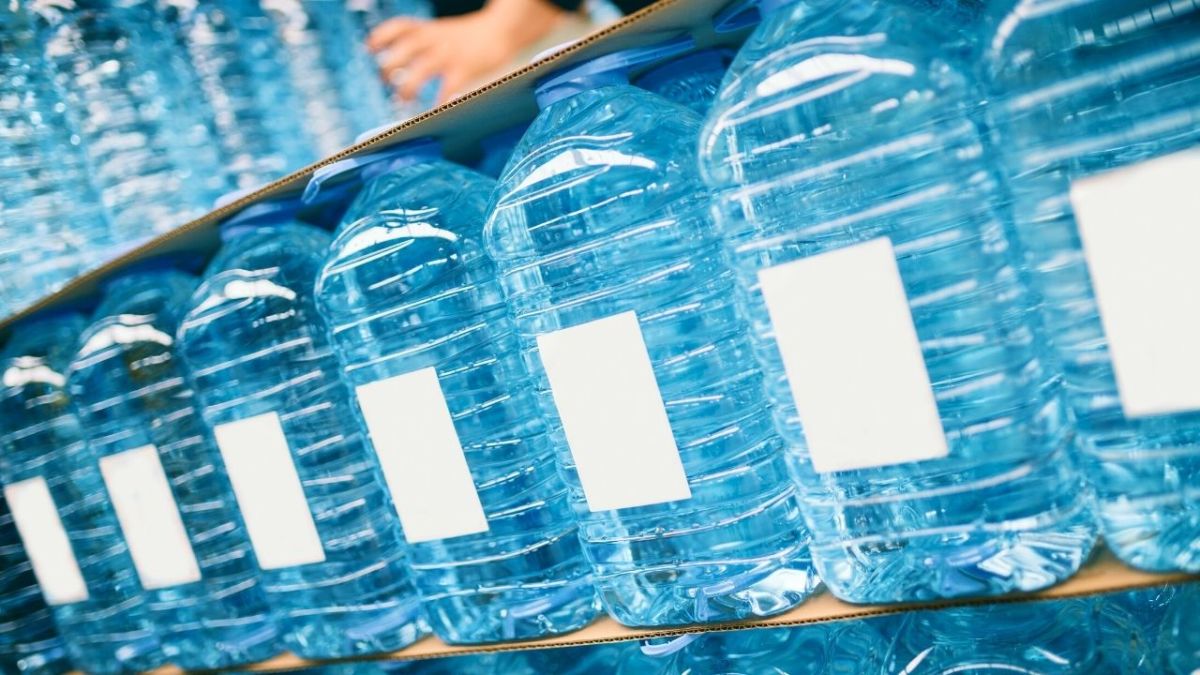
Regularly clean your old water bottles and canisters
It's always a good idea to clean a new water tank or container before storing clean water in it.
Additionally, it would be advisable to regularly clean old water storage containers. Use old water for washing, your garden, or for watering plants.
The CDC recommends that you follow these steps for cleaning and disinfecting water canisters:
- Wash the storage container and rinse it completely with water.
- Disinfect the container with a solution made by mixing one teaspoon of unscented liquid household chlorine bleach in one liter of water.
- Cover the container tightly and shake it well. Make sure the disinfectant bleach solution touches all inner surfaces of the container.
- Wait at least 30 seconds and then pour the disinfection solution out of the container.
- Allow the empty, disinfected container to dry in the air BEFORE use, OR rinse the empty container with clean, safe water that is already available.
- Then fill the disinfected container with clean water and close it with a tight lid.
- Label the container as “drinking water” and write the current date on it.
Conclusion on Water Storage
It is important to know how long you can store water in different types of containers and under different conditions.
Water is such a significant and neglected commodity that all of us should store to protect the lives of our family in the event of an unforeseen emergency.
I hope this article has been helpful, and encourage all readers to store water for each member of your family for at least two weeks.
Are you searching for help getting started with food and water storage? Take a look at the water storage calculator from Survival-Kompass and my food storage calculator!

Sources for the guide
https://www.fema.gov/pdf/library/f&web.pdf
https://www.fema.gov/press-release/20210318/fact-sheet-how-make-your-water-safe-drink
https://www.ready.gov/water
http://cdc.gov/healthywater/pdf/emergency/09_202278-B_Make_Water_Safe_Flyer_508.pdf
https://de.wikihow.com/Wasser-reinigen

Author of the guide
Martin Gebhardt
Hey, I'm Martin. On my blog, you will learn the basics and numerous details about living in the wild. I think survival, bushcraft and the good life in nature are the keys to happiness. Find me here on Instagram or on YouTube. You can find more about my mission on the About Me page.
Was this guide helpful?
154 people found this guide helpful.
4.95 out of 5 points (156 Ratings)
Comments (0)
This post may contain affiliate links. So if you click on the links and make a purchase, I will receive a small commission at no additional cost to you. Click here, to learn more about it.


